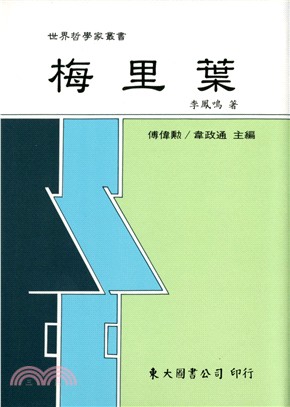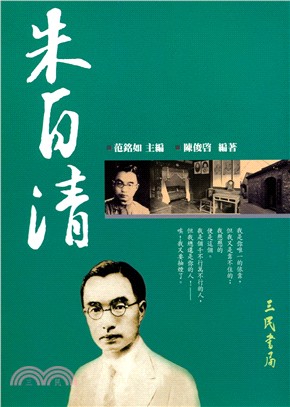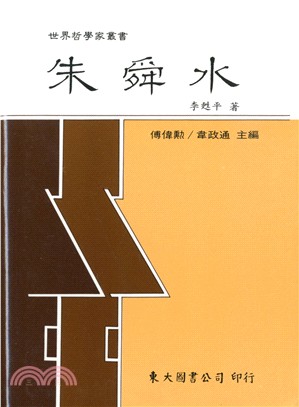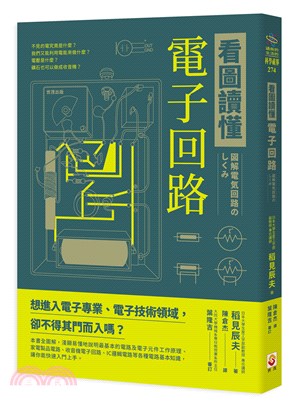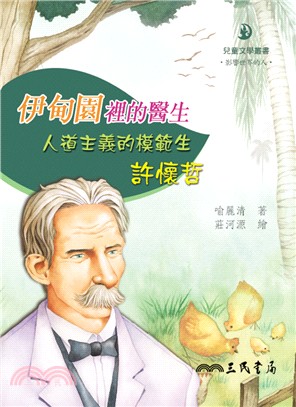The Routledge Course in Japanese Translation ─ Principles and Applications for the Advanced Language Learner
相關商品
商品簡介
作者簡介
目次
商品簡介
The Routledge Course in Japanese Translation brings together for the first time material dedicated to the theory and practice of translation to and from Japanese.
This one semester advanced course in Japanese translation is designed to raise awareness of the many considerations that must be taken into account when translating a text. As students progress through the course they will acquire various tools to deal with the common problems typically involved in the practice of translation. Particular attention is paid to the structural differences between Japanese and English and to cross-cultural dissimilarities in stylistics.
Essential theory and information on the translation process are provided as well as abundant practical tasks.
The Routledge Course in Japanese Translation is essential reading for all serious students of Japanese at both undergraduate and postgraduate level.
This one semester advanced course in Japanese translation is designed to raise awareness of the many considerations that must be taken into account when translating a text. As students progress through the course they will acquire various tools to deal with the common problems typically involved in the practice of translation. Particular attention is paid to the structural differences between Japanese and English and to cross-cultural dissimilarities in stylistics.
Essential theory and information on the translation process are provided as well as abundant practical tasks.
The Routledge Course in Japanese Translation is essential reading for all serious students of Japanese at both undergraduate and postgraduate level.
作者簡介
Yoko Hasegawa is Associate Professor of Japanese Linguistics in the Department of East Asian Languages and Cultures at the University of California, Berkeley.
目次
Chapter 1 Introduction
1.1 Why Translation?
1.2 About This Book
1.3 What Is Translation?
1.4 Translatability
1.5 Translation Direction
1.6 Translator Competence
Chapter 2 Kinds of Meaning I
2.1 Propositional Meaning
2.1.1 Proper Nouns
2.1.2 Polysemy
2.1.3 Synonymy
2.1.4 Hyponymy
2.2 Presupposed Meaning
2.3 Expressive Meaning
2.4 Indexical Meaning
2.4.1 Indexicality
2.4.2 Phatic Communion
2.4.3 Register
Chapter 3 Kinds of Meaning II
3.1 Symbolic Meaning
3.2 Allusive Meaning
3.3 Associative and Collocative Meaning
3.4 Textual Meaning
3.5 Figurative Meaning
3.5.1 Simile
3.5.2 Metaphor
3.5.3 Metonymy
3.6 Speech Acts
3.7 Ambiguity and Vagueness
3.7.1 Ambiguity
3.7.2 Vagueness
Chapter 4 Discourse Genre
4.1 Narrative Discourse
4.1.1 General Characteristics
4.1.2 Tense and Aspect
4.1.3 Free Indirect Style
4.2 Procedural Discourse
4.3 Expository Discourse
4.4 Descriptive Discourse
4.5 Hortatory Discourse
4.6 Repartee Discourse
4.7 Reiss’ Classification
Chapter 5 Understanding the Source Text
5.1 Introduction
5.2 Reading as Constructing Meaning
5.3 Predicates and Arguments
5.4 Argument Recovery
5.4.1 Wa and Ga
5.4.2 Connectives
5.5 Noun Modification
5.5.1 Internally-Headed Relative Clause
5.5.2 Gapless Relative Clause
5.5.3 Multi-layered Relative Clause
5.6 Complex Sentences
5.7 Evidentiality and Egocentricity
5.7.1 Evidentiality
5.7.2 Egocentricity
5.8 Ambiguity Revisited
Chapter 6 Translation Techniques
6.1 Vinay and Darbelnet’s Categorization
6.1.1 Borrowing
6.1.2 Calque
6.1.3 Literal Translation
6.1.4 Transposition
6.1.5 Modulation
6.1.6 Equivalence
6.1.7 Adaptation
6.2 Translation by Omission
6.3 Information Addition/Deletion & Offsetting the Loss
6.4 Contrustive Rhetoric
6.4.1 Text Organization
6.4.2 Paragraph
6.4.3 Verbiage
6.1.4 Phaticism
Chapter 7 Translation Studies
7.1 Premodern Translation Theories
7.2 Mid-Twentieth Century Translation Theories
7.3 Skopos Theory
7.4 The Negative Analytic
7.4.1 Rationalization
7.4.2 Clarification
7.4.3 Expansion
7.4.4 Ennoblement
7.4.5 The Destruction of Vernacular Networks or Their Exoticization
7.5 Recent Approaches
7.5.1 Cultural Communication
7.4.2 Formation of Cultural Identity
Chapter 8 Translation Projects
8.1 The Translation Situation
8.1.1 The Initiator and His/Her Skopos
8.1.2 The Author, His/Her Skopos, and the Spatiotemporal Location
8.1.3 Audiences
8.1.4 Other Factors
8.1.5 Case Study
8.2 Reading the Source Text
8.3 Research
8.4 Writing and Revising the Target Text
8.5 Working as a Team
8.6 Translation Evaluation
8.6.1 Evaluation Criteria
8.6.2 ATA Certification Program
8.7 Concluding Remarks
Appendix A Romanization
Appendix B ATA Certification Program Error Marking Sheet
Appendix C ATA Flowchart for Error Point Decisions
Appendix D Answer Key
References
Index
1.1 Why Translation?
1.2 About This Book
1.3 What Is Translation?
1.4 Translatability
1.5 Translation Direction
1.6 Translator Competence
Chapter 2 Kinds of Meaning I
2.1 Propositional Meaning
2.1.1 Proper Nouns
2.1.2 Polysemy
2.1.3 Synonymy
2.1.4 Hyponymy
2.2 Presupposed Meaning
2.3 Expressive Meaning
2.4 Indexical Meaning
2.4.1 Indexicality
2.4.2 Phatic Communion
2.4.3 Register
Chapter 3 Kinds of Meaning II
3.1 Symbolic Meaning
3.2 Allusive Meaning
3.3 Associative and Collocative Meaning
3.4 Textual Meaning
3.5 Figurative Meaning
3.5.1 Simile
3.5.2 Metaphor
3.5.3 Metonymy
3.6 Speech Acts
3.7 Ambiguity and Vagueness
3.7.1 Ambiguity
3.7.2 Vagueness
Chapter 4 Discourse Genre
4.1 Narrative Discourse
4.1.1 General Characteristics
4.1.2 Tense and Aspect
4.1.3 Free Indirect Style
4.2 Procedural Discourse
4.3 Expository Discourse
4.4 Descriptive Discourse
4.5 Hortatory Discourse
4.6 Repartee Discourse
4.7 Reiss’ Classification
Chapter 5 Understanding the Source Text
5.1 Introduction
5.2 Reading as Constructing Meaning
5.3 Predicates and Arguments
5.4 Argument Recovery
5.4.1 Wa and Ga
5.4.2 Connectives
5.5 Noun Modification
5.5.1 Internally-Headed Relative Clause
5.5.2 Gapless Relative Clause
5.5.3 Multi-layered Relative Clause
5.6 Complex Sentences
5.7 Evidentiality and Egocentricity
5.7.1 Evidentiality
5.7.2 Egocentricity
5.8 Ambiguity Revisited
Chapter 6 Translation Techniques
6.1 Vinay and Darbelnet’s Categorization
6.1.1 Borrowing
6.1.2 Calque
6.1.3 Literal Translation
6.1.4 Transposition
6.1.5 Modulation
6.1.6 Equivalence
6.1.7 Adaptation
6.2 Translation by Omission
6.3 Information Addition/Deletion & Offsetting the Loss
6.4 Contrustive Rhetoric
6.4.1 Text Organization
6.4.2 Paragraph
6.4.3 Verbiage
6.1.4 Phaticism
Chapter 7 Translation Studies
7.1 Premodern Translation Theories
7.2 Mid-Twentieth Century Translation Theories
7.3 Skopos Theory
7.4 The Negative Analytic
7.4.1 Rationalization
7.4.2 Clarification
7.4.3 Expansion
7.4.4 Ennoblement
7.4.5 The Destruction of Vernacular Networks or Their Exoticization
7.5 Recent Approaches
7.5.1 Cultural Communication
7.4.2 Formation of Cultural Identity
Chapter 8 Translation Projects
8.1 The Translation Situation
8.1.1 The Initiator and His/Her Skopos
8.1.2 The Author, His/Her Skopos, and the Spatiotemporal Location
8.1.3 Audiences
8.1.4 Other Factors
8.1.5 Case Study
8.2 Reading the Source Text
8.3 Research
8.4 Writing and Revising the Target Text
8.5 Working as a Team
8.6 Translation Evaluation
8.6.1 Evaluation Criteria
8.6.2 ATA Certification Program
8.7 Concluding Remarks
Appendix A Romanization
Appendix B ATA Certification Program Error Marking Sheet
Appendix C ATA Flowchart for Error Point Decisions
Appendix D Answer Key
References
Index
主題書展
更多主題書展
更多書展本週66折
您曾經瀏覽過的商品
購物須知
外文書商品之書封,為出版社提供之樣本。實際出貨商品,以出版社所提供之現有版本為主。部份書籍,因出版社供應狀況特殊,匯率將依實際狀況做調整。
無庫存之商品,在您完成訂單程序之後,將以空運的方式為你下單調貨。為了縮短等待的時間,建議您將外文書與其他商品分開下單,以獲得最快的取貨速度,平均調貨時間為1~2個月。
為了保護您的權益,「三民網路書店」提供會員七日商品鑑賞期(收到商品為起始日)。
若要辦理退貨,請在商品鑑賞期內寄回,且商品必須是全新狀態與完整包裝(商品、附件、發票、隨貨贈品等)否則恕不接受退貨。
















